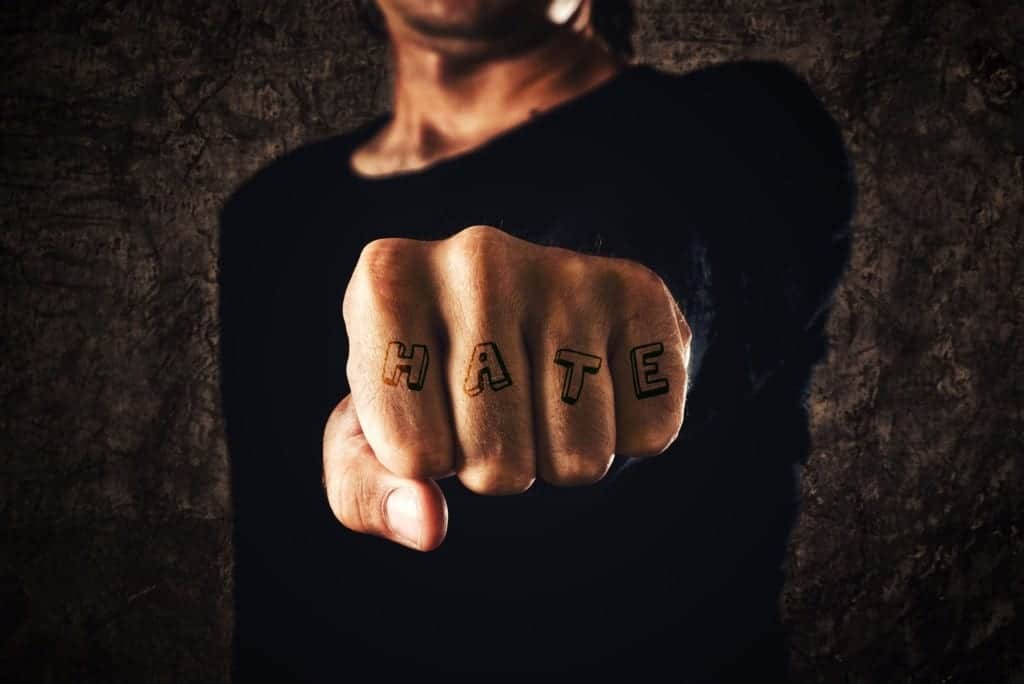 The Matthew Shepard and James Byrd Jr., Hate Crimes Prevention Act of 2009, codified at 18 U.S.C. § 249, was enacted as Division E of the National Defense Act for Fiscal Year 2010. More commonly known as the federal hate crimes law, the core purpose of this Act is to provide funding and technical assistance to state, local and tribal jurisdictions to investigate and prosecute hate crimes.
The Matthew Shepard and James Byrd Jr., Hate Crimes Prevention Act of 2009, codified at 18 U.S.C. § 249, was enacted as Division E of the National Defense Act for Fiscal Year 2010. More commonly known as the federal hate crimes law, the core purpose of this Act is to provide funding and technical assistance to state, local and tribal jurisdictions to investigate and prosecute hate crimes.
The Act criminalizes willfully causing bodily injury (or attempting to do so with fire, firearm, or other dangerous weapon) when: 1) the crime was committed because of the actual or perceived race, color, religion, national origin of any person or 2) the crime was committed because of the actual or perceived religion, national origin, gender, sexual orientation, gender identity, or disability of any person and the crime affected interstate or foreign commerce or occurred within federal special maritime or territorial jurisdiction.
According to the FBI, the term “hate crime” did not fully enter the nation’s lexicon until the 1980s. That’s when the nation experienced a wave of bias-related crimes, mostly carried out by various Skinhead groups against minorities. However, the FBI has a history of investigating what is now known as “hate crimes” as far back of WWI when the Ku Klux Klan gained national prominence.
Forty-nine states and the federal government have hate crime laws. According to the National Institute of Justice (“NIJ”), the only state without a hate crime law is Wyoming. That’s strange since the federal hate crimes law was named after Matthew Shepard, a gay student at the University of Wyoming, who was brutally beaten near Laramie and died of severe head injuries six days later in a Colorado hospital.
The James Byrd Jr. Hate Crime Act Defined Hate Crimes in Texas in 2001
While the state hate crimes laws vary and do not provide a uniform legal definition of a hate crime, the NIJ says that nearly all States specify race, religion, or ethnicity as “protected groups.” For example, in 2001, former Gov. Rick Perry signed the James Byrd Jr. Hate Crimes Act (“Byrd Act”) into law defining hate crimes as offenses “motivated by bias or prejudice.” Texas Monthly reported earlier this year that the Byrd Act expanded the broader definition of a hate crime as an offense specifically “motivated by a victim’s race, religion, color, sex, disability, sexual preference, age, or national origin.” But, as the magazine noted, “there is no such thing as a transgender hate crime” in Texas.
These confusing and often convoluted state hate crime laws reflect what the NIJ calls a “lack of national consensus” on whether a “hate crime should be considered a separate class of crime.” State lawmakers have been forced to consider a laundry list of social concerns about how hate crime legislation should be written. The NIJ pointed to these questions surrounding the ongoing hate crime debate:
- Should hate or bias motivation be considered when the underlying offense, such as assault or vandalism, is already covered by criminal law?
- Do hate-crime laws punish thoughts rather than actions?
- What are the ramifications of basing additional penalties upon the thoughts that motivate offenders rather than on the behavior itself?
- Is it possible to determine with legally acceptable certainty the motive behind a person’s criminal acts?
- Do hate-crime laws result in more severe punishments for crimes against certain groups of people than for equivalent crimes committed against other groups?
- Are hate-crime victims more traumatized than other victims of the same underlying offense because they feel personally targeted?
- Does hate crime increase fear in the community beyond what might exist for similar crimes that are not motivated by hate?
Texas’s first hate crime law was passed in 1993 but rarely, if ever, invoked. Prosecutors were relatively uncertain about prosecuting hates crimes because the 1993 law was too vague to be useful. Speaking about the 1993 law, Scott Henson, who writes the Grits For Breakfast criminal justice blog, told the Statesman in 2012: “The law should punish bad actions, not unpopular or ignorant beliefs. It’s another enforcement passed more out of political posturing than from good public policy or common sense.”
Byrd Act prosecutions seem to reflect its general unpopularity with prosecutors, who seem to apply it only when the media pressure or political advantage demands.
Since its 2001 enactment, law enforcement agencies across the state have reported approximately 200 crimes motivated by bias against a protected group, according to the Austin American-Statesman. The newspaper cited figures from the Office of Court Administration to show that, as of 2012, Texas prosecutors had secured only 10 convictions under the Act, and only one of those came via a jury verdict; the rest were guilty pleas.
The Byrd Act, like most other state hate crime statutes, has certain limitations; namely, it only enhances the original crime by a single level, e.g., a second degree felony to a first degree felony. More serious crimes, such as murder, aggravated robbery, kidnapping and sexual assault are excluded from the Act because they already carry long prison terms.
Just because the Byrd Act is seldom used by state prosecutors does not mean hate crimes prosecutions never occur in Texas.
For example, last year (Nov. 2014) a Springtown, Texas teenager was convicted of kidnapping and assault—offenses federal prosecutors charged were committed because of the teenager’s hatred of the victim’s sexual preference. He was sentenced to a term of 183 months imprisonment in a U.S. District Court in Fort Worth. U.S. Attorney Sarah R. Saldana of the Northern District of Texas had this say in a prepared statement released after the sentence was imposed:
“Quite simply, hate crimes of any nature will not be tolerated. Prosecutions under this law are important to ensure all people in our community know they have the full protection of the law.”
In this case, the teenager was compelled into a plea bargain. The Springtown Police Department and the Parker County Sheriff’s Office worked closely with the FBI to have hate crime charges brought against him in federal court because, in all likelihood, state prosecutors refused to bring a hate crimes charge. Some criminal justice people, especially defense attorneys, believe this sort of federal interference may force state prosecutors to more aggressively pursue hate crime charges. This view is supported by the fact that in 2012 Texas law enforcement agencies reported 171 incidents of hate crimes involving 198 victims and 198 offenders, a 17.1 percent increase in reporting than was the case in 2011.
In Texas, the Byrd Act is codified in Article 42.014 of the Texas Code of Criminal Procedure. The Crime Victims Institute at Sam Houston State University points out that this statute applies if a “judge or jury” determines beyond a reasonable doubt that a defendant intentionally targeted a protected group under Title 5 (Offenses Against The Person), or Section 28.02 (arson), 28.03 (criminal mischief) or 28.08 (graffiti). If such a determination is made, Section 12.47 of the Texas Penal Code increases the penalty to the next highest category of offense. There are two exceptions to this rule: 1) if the offense charged is a Class A misdemeanor, the punishment is increased only to 180 days in jail rather than to the next highest category; and 2) if the defendant is charged in a first-degree felony (a non-capital offense), the penalty is not increased to the next highest category because to do so would transform the offense into a capital offense punishable by life imprisonment or death.
Under the federal hate crimes act, prosecutors must prove beyond a reasonable doubt that a defendant targeted a particular protected group because he or she was motivated by bias and prejudice. Securing hate crimes convictions are difficult for federal prosecutors because of the mental state that must be proved beyond a reasonable doubt. In addition, federal juries are drawn from a wider social net, including suburban and rural areas, and are not grunted to follow a prosecutor lock step without question. TheWall Street Journal in 2013 reported that “millions of Americans … see such federal charges as an example of double jeopardy, and a politicized prosecution to boot.”




